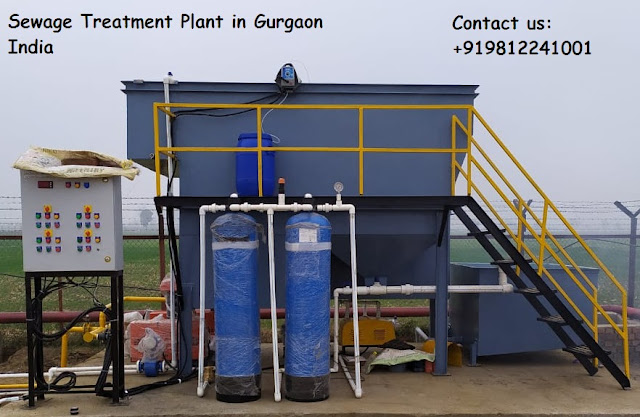Sewage treatment Plant
Sewage treatment is the way toward expelling contaminants from metropolitan
wastewater, containing for the most part family unit sewage in addition to some
mechanical wastewater. Physical, chemical, and biological processes are
utilized to evacuate contaminants and produce rewarded wastewater (or rewarded
effluent) that is protected enough for discharge into the earth. A side-effect
of sewage treatment is a semi-strong waste or slurry, called sewage sludge. The
sludge needs to experience further treatment before being appropriate for
removal or application to land.
Sewage treatment may likewise be alluded to as wastewater treatment. Be
that because it may, the last may be a more extensive term which may likewise
allude to mechanical wastewater. For most urban areas, the sewer system will
likewise convey the extent of mechanical effluent to the sewage treatment plant
which has typically gotten pre-treatment at the production lines themselves to
decrease the contamination load. On the off chance that the sewer system is a
joined sewer, at that point it will likewise convey urban spillover
(stormwater) to the sewage treatment plant. Sewage water can go towards
treatment plants by means of channeling and in a stream helped by gravity and
siphons. The initial segment of filtration of sewage normally incorporates a
bar screen to channel solids and enormous items which are then gathered in
dumpsters and discarded in landfills. Fat and oil is likewise evacuated before
the primary treatment of sewage.
Sewage may incorporate stormwater spillover or urban overflow. Sewerage
systems fit for dealing with storm water are known as joined sewer systems.
This plan was normal when urban sewerage systems were first evolved, in the
late nineteenth and mid twentieth hundreds of years. Consolidated sewers
require a lot bigger and more costly treatment offices than clean sewers.
Substantial volumes of tempest spillover may overpower the sewage treatment
system, causing a spill or flood. Sterile sewers are regularly a lot littler
than joined sewers, and they are not intended to ship stormwater.
Reinforcements of crude sewage can happen if exorbitant invasion/inflow
(weakening by stormwater as well as groundwater) is permitted into a clean
sewer system. Networks that have urbanized in the mid-twentieth century or
later by and large have constructed separate systems for sewage (clean sewers)
and stormwater, in light of the fact that precipitation causes broadly changing
streams, diminishing sewage treatment plant effectiveness.
As precipitation goes over rooftops and the ground, it might get different
contaminants including soil particles and other silt, substantial metals,
natural mixes, creature waste, and oil and oil. A few wards require stormwater
to get some degree of treatment before being released legitimately into
conduits. Instances of treatment processes utilized for stormwater incorporate
maintenance bowls, wetlands, covered vaults with different sorts of media
channels, and vortex separators (to expel coarse solids).
In exceptionally controlled created nations, mechanical effluent generally
gets in any event pretreatment if not full treatment at the processing plants
themselves to lessen the contamination load, before releasing to the sewer.
This procedure is called mechanical wastewater treatment or pretreatment. The
equivalent doesn't make a difference to many creating nations where mechanical
effluent is bound to enter the sewer in the event that it exists, or even the
getting water body, without pretreatment.
Modern wastewater may contain toxins that can't be expelled by regular
sewage treatment. Likewise, the factor stream of mechanical waste related to
creation cycles may agitate the populace elements of biological treatment
units, for example, the actuated sludge process.



I was looking around for help as I am planning the installation of the Sewage Treatment Plant at my business unit, thanks the website now everything is very clear for me.
ReplyDeleteThanks for Useful infromation Try friend as I am looking for options to install the Wet scrubbers and I must say they are actually offering the best deals in town.
ReplyDeleteVenturis Wet Scrubber in India can be used to gather both particulate and gaseous pollutants, but they are more effective to remove particles than gaseous pollutants. With Venturi scrubbers, the dirty gas entering a scrubber is forced at high velocity via a Venturi where it collides with scrubbing water. The tiny water droplets grab particles via diffusion and impaction. The mist eliminator for a Venturi scrubber is often a separate device known as a cyclonic separator. The dirty water is after that removed in the cyclonic separator and discharged into a recycle tank. Some of the liquid is continuously cleansed to limit the solids concentration while allowing recirculation back to the Venturi section.
ReplyDelete